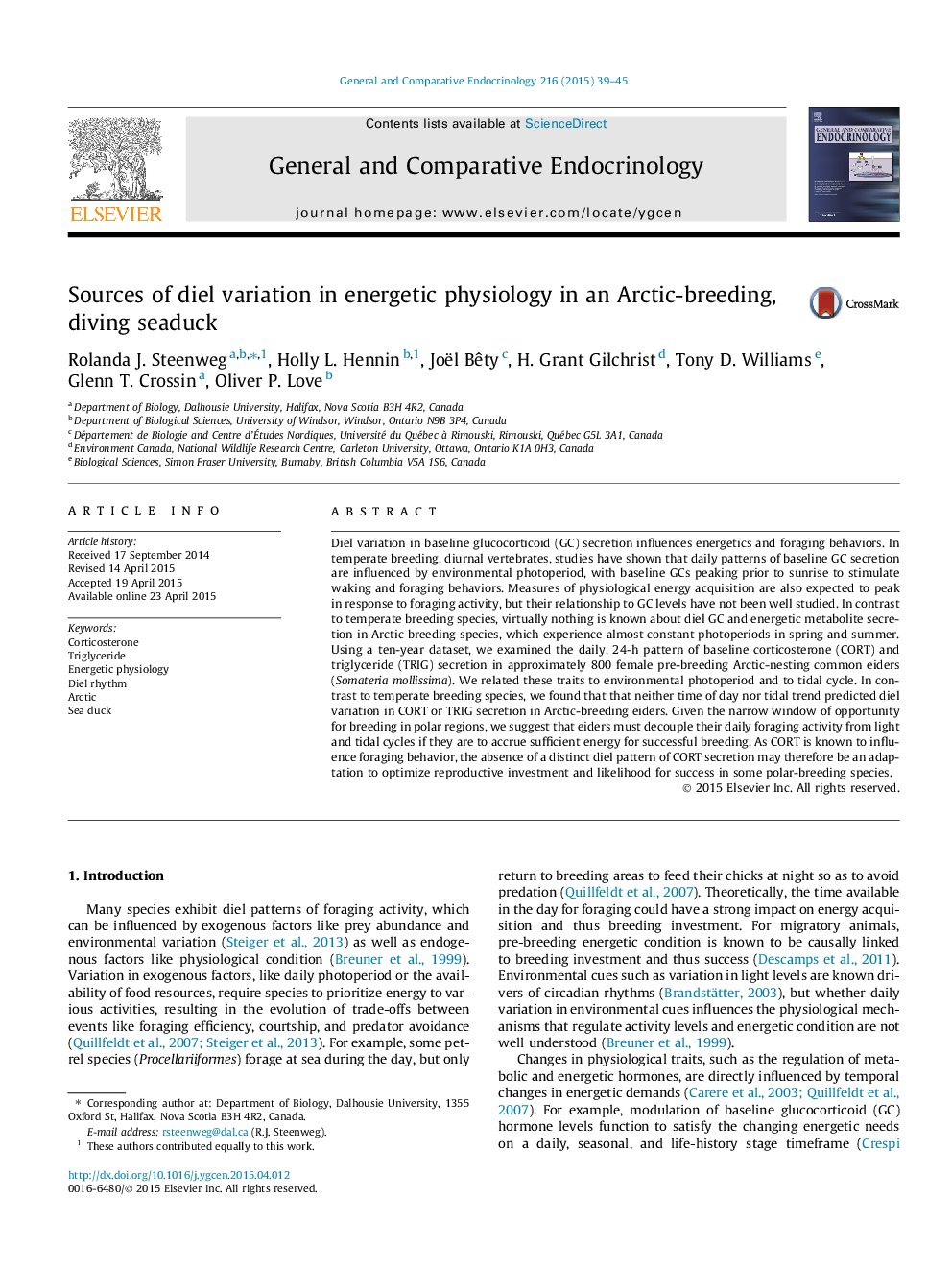| کد مقاله | کد نشریه | سال انتشار | مقاله انگلیسی | نسخه تمام متن |
|---|---|---|---|---|
| 5900994 | 1568889 | 2015 | 7 صفحه PDF | دانلود رایگان |
- We investigated diel rhythms in the Arctic-breeding common eider.
- We related time of day and tidal trend to corticosterone and triglyceride secretion.
- We expected CORT to influence foraging, and foraging to influence TRIG.
- We found no trends in secretion in relation to time of day nor tidal trend.
- Eiders may forage independent of environmental factors to prepare for reproduction.
Diel variation in baseline glucocorticoid (GC) secretion influences energetics and foraging behaviors. In temperate breeding, diurnal vertebrates, studies have shown that daily patterns of baseline GC secretion are influenced by environmental photoperiod, with baseline GCs peaking prior to sunrise to stimulate waking and foraging behaviors. Measures of physiological energy acquisition are also expected to peak in response to foraging activity, but their relationship to GC levels have not been well studied. In contrast to temperate breeding species, virtually nothing is known about diel GC and energetic metabolite secretion in Arctic breeding species, which experience almost constant photoperiods in spring and summer. Using a ten-year dataset, we examined the daily, 24-h pattern of baseline corticosterone (CORT) and triglyceride (TRIG) secretion in approximately 800 female pre-breeding Arctic-nesting common eiders (Somateria mollissima). We related these traits to environmental photoperiod and to tidal cycle. In contrast to temperate breeding species, we found that that neither time of day nor tidal trend predicted diel variation in CORT or TRIG secretion in Arctic-breeding eiders. Given the narrow window of opportunity for breeding in polar regions, we suggest that eiders must decouple their daily foraging activity from light and tidal cycles if they are to accrue sufficient energy for successful breeding. As CORT is known to influence foraging behavior, the absence of a distinct diel pattern of CORT secretion may therefore be an adaptation to optimize reproductive investment and likelihood for success in some polar-breeding species.
Journal: General and Comparative Endocrinology - Volume 216, 15 May 2015, Pages 39-45
